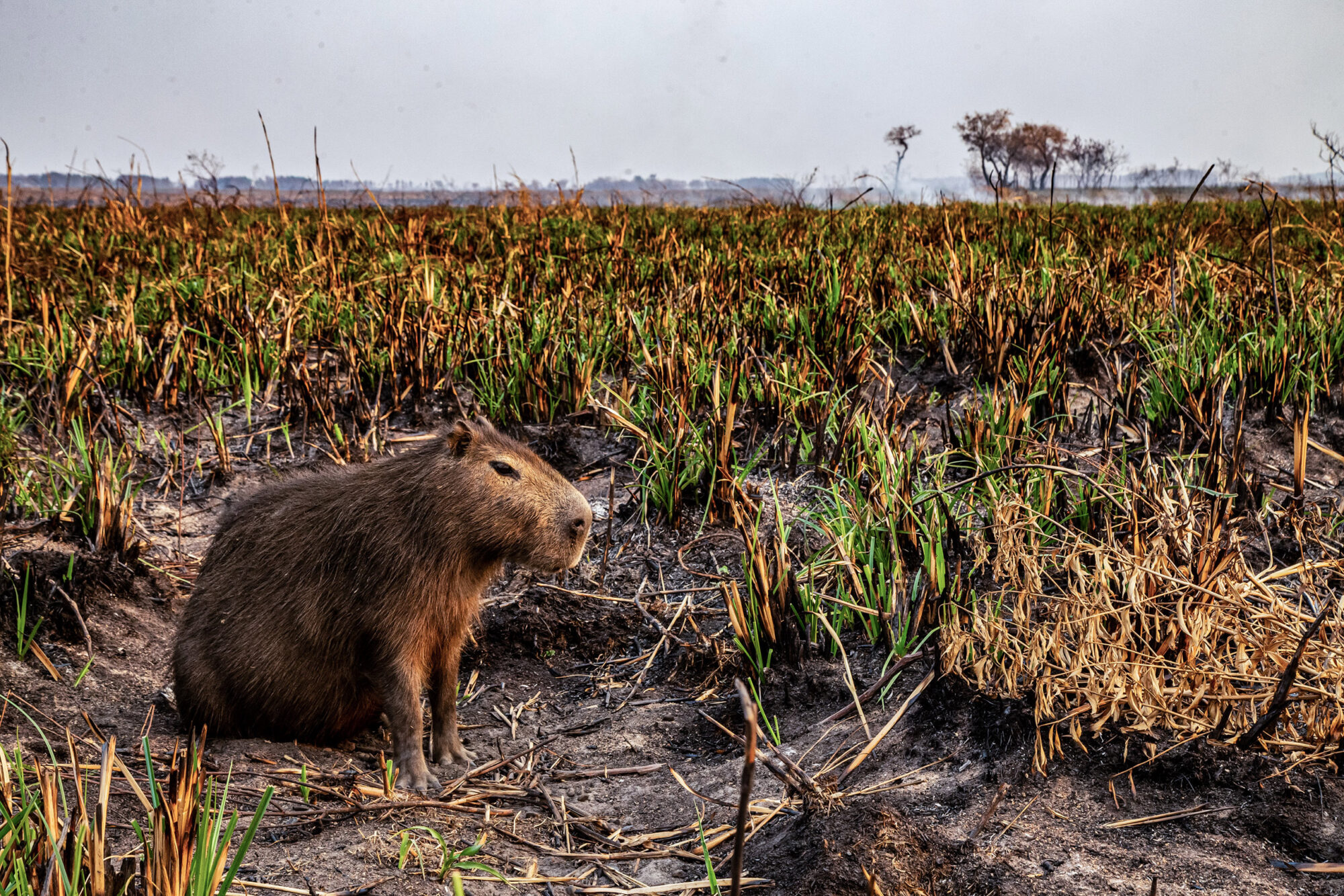Esteban Martín keeps several dozen beehives at his home, a simple property at the edge of El Laurel stream, on one of the hundreds of islands in the Argentine province of Entre Ríos. The islands form part of the wetlands of the Paraná River delta, one of the largest, most populated and biodiverse in the world.
“I am an islander and a beekeeper,” says 66-year-old Martín. “I’ve lived here all my life – this is my life – and I’ve never seen this place like now, all dry and burnt. The landscape we had before has disappeared. After the fire it changed forever. This was a wetland, and they are turning it into a field.”
Wetlands cover more than 20% of Argentina’s surface area. They are a diverse range of ecosystems covered by water, or with soils that are seasonally or permanently saturated with water, such as marshes, estuaries and riparian forests. They provide important ecosystem services, from drought mitigation to carbon sequestration.
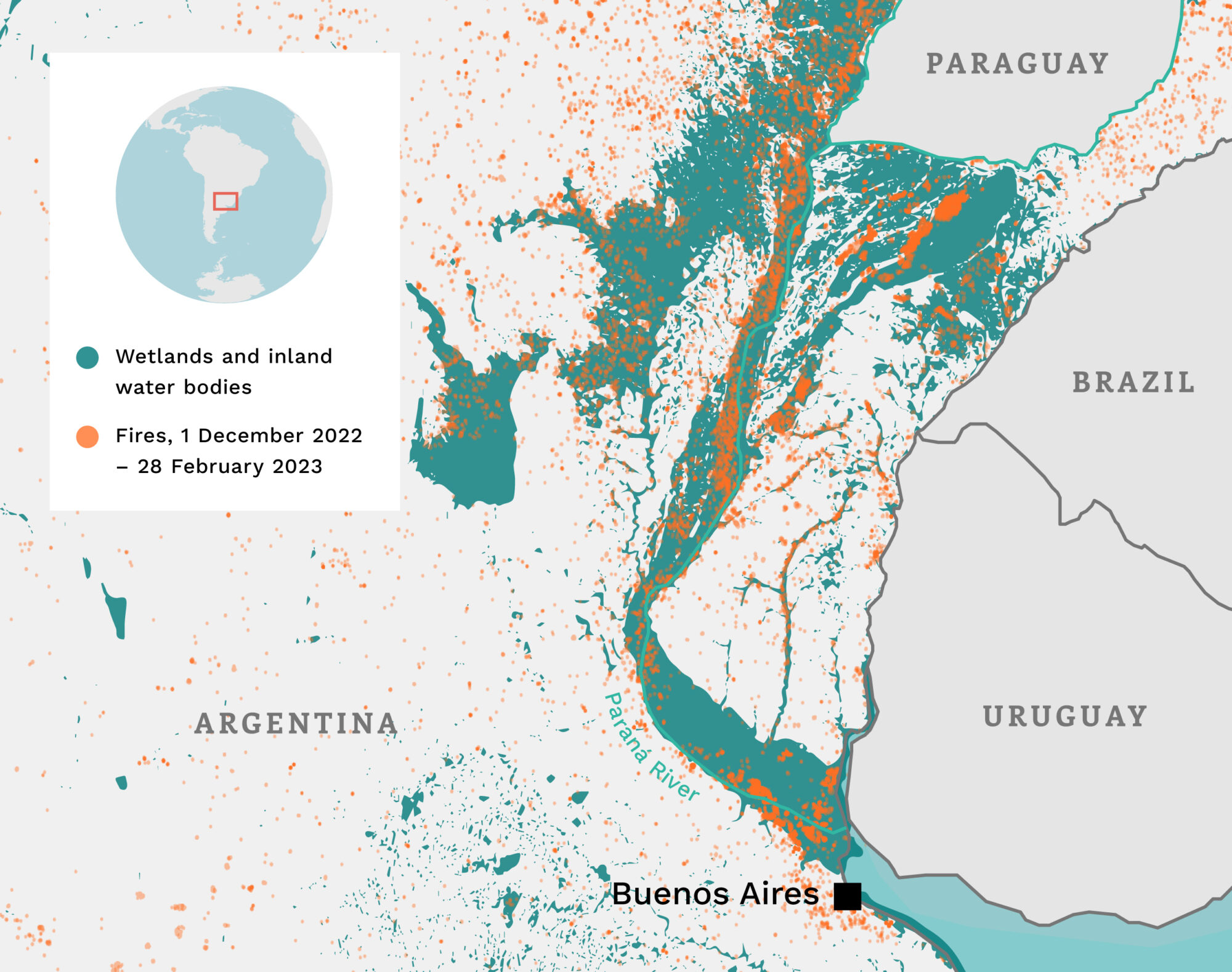
Martín’s island has been struck by fires twice in three years: in 2020, his house, the shed where he kept his tools and many of his hives burned down. “I had to start from scratch because I had nothing left,” he recalls. Then, at the end of 2022, a new wave of fires destroyed his entire honey production facility: “It was very hard. I am still trying to start producing again because I lost all my bees. The fire affected my health and my work.”
The Paraná Delta, which covers an area of 1.7 million hectares, is facing a historic fire crisis, one that has recently began to reach further north, into the province of Corrientes and its Iberá wetlands – another area of swamps, bogs and lagoons that stretches over 1.3 million hectares.
More than half the area of the Paraná Delta has been affected by fire in the past three years. In the Iberá marshes, more than 100,000 hectares have so far burned in 2023.
This has brought negative impacts to ecosystems, their soils, habitats and species, while air pollution and smoke have posed serious public health problems for nearby cities such as Rosario and its 1 million inhabitants. “The burning of wetlands is one of the worst ecological disasters in the region and seriously affects the health of our population,” according to the medical school at the University of Rosario.
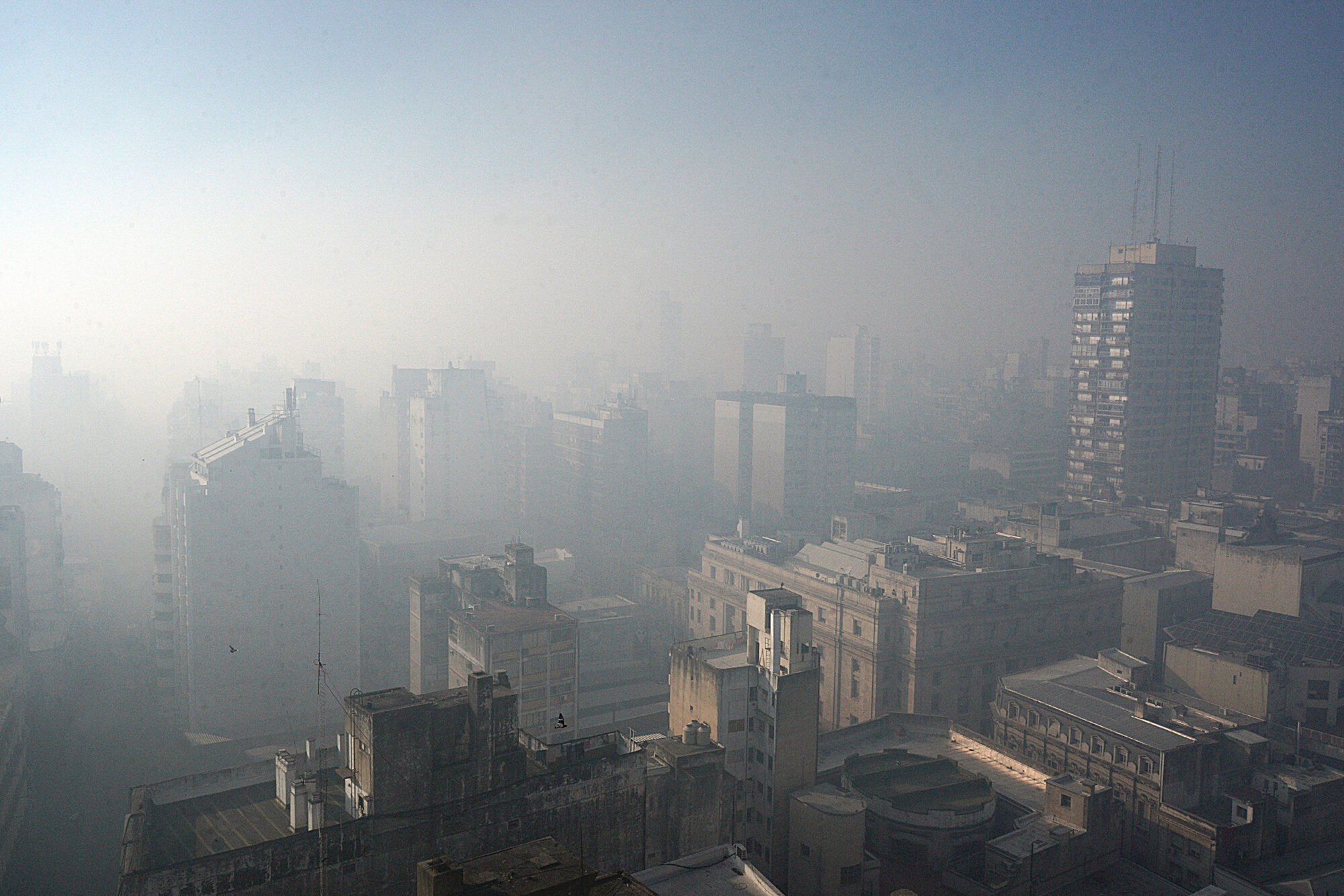
The fires have coincided with a historic three-year drought in Argentina, the effects of which are being exacerbated by climate change. Prolonged dry spells, combined with a number of intense heatwaves, have created ideal conditions for wildfires to start – and spread.
Environmental organisations, however, have repeatedly alleged that fires have been started deliberately, pointing towards changes in land use driven by cattle ranchers seeking to expand their pastures by burning off natural vegetation. In order to regulate the use of these areas, they have for years been calling on Argentina’s national and provincial governments to sanction a Wetlands Law that would improve the protection of these ecosystems – but one that has faced a struggle to gain sufficient support.
Demand for meat, push for pasture
Cattle ranching on wetlands is an activity long established in Argentina, a country home to some 53 million head of cattle. The province of Entre Ríos, where 80% of the islands that make up the Paraná Delta are located, has 2.8 million head distributed across its mainland and island areas, according to the 2018 Agricultural and Livestock Census.
Argentina’s livestock production totalled over 3 million tonnes in 2022, a significant portion of which was sent overseas: exports reached 625,700 tonnes last year, a 9.5% increase on 2021, according to figures from CICCRA, the Argentine meat industry’s business chamber. China is the country’s biggest beef buyer, accounting for 485,700 tonnes of exports in 2022, a 14.4% rise on 2021 figures. Eight out of every 10 kg of meat exported went to the East Asian country, bringing revenues of US$2.3 billion.
As demand grows and production looks to expand, Argentina’s wetlands have increasingly been targeted for conversion to pasture, including as part of government-backed programmes, sparking controversy and debate.
“Cattle ranching can be the most appropriate economic activity in the Paraná Delta wetlands, but only if it is done in a sustainable way, not in an industrial way,” says Rubén Quintana, a biologist and president of the Fundación Humedales (Wetlands Foundation), the regional branch of the NGO Wetlands International.
Livestock farming in Argentina’s wetlands has seen a change in scale over recent decades: from a former landscape of small or subsistence farms, most are now industrial in size and character.
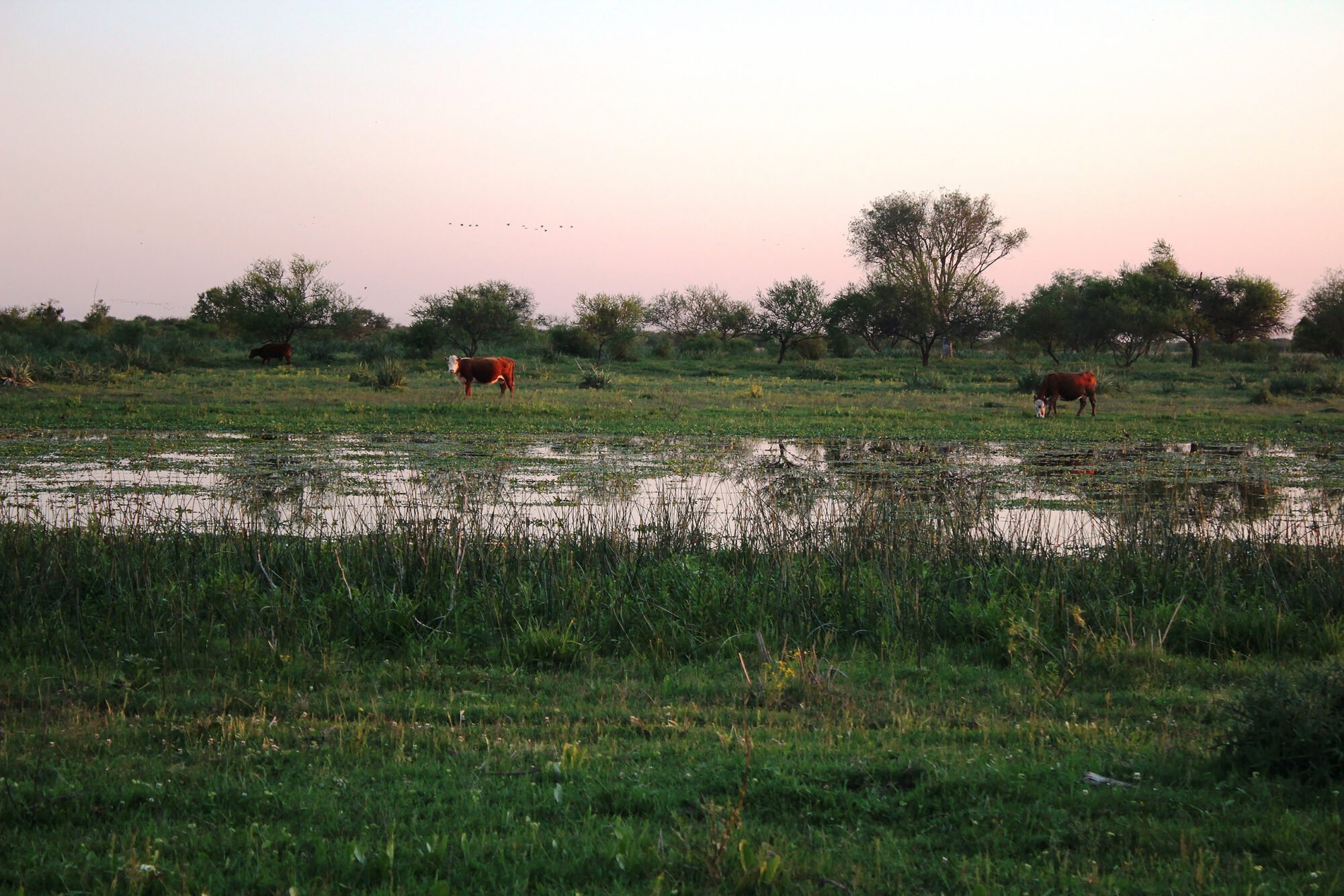
There has also been notable growth in cattle head in recent years, correlating to the flow of the Paraná: as the river suffers from prolonged low water levels, reaching the lowest levels in nearly 80 years, new lands have become available for producers. According to data from SENASA, the national agricultural and food safety service, the number of cattle in the Paraná Delta grew by 46% between 2017 and 2022, from 130,992 to 191,662.
However, agronomist Ernesto Massa, from the National Institute of Agricultural Technology (INTA), highlights that the peak in the number of cattle in the delta came in 2007, when it reached 1.5 million head – a figure that has never been repeated and has seen much fluctuation since. “Since 2010 the stock has been declining, although it is true that with the lowering of the river, the general load of animals has risen. Today we are at 60 or 70% of the record levels of 2007,” he explains.
Leonardo Scarparo, a livestock producer in the area, echoes Massa’s point. “We are at 10% of what the cattle load was at the best times. The islands were pretty empty before the fires,” says the farmer, who works 800 hectares with some 200 animals, with most of his meat going to export.
Fire, cows and blame
Environmental organisations have claimed that fires in the wetlands have mostly been started by cattle ranchers to “clear” dry vegetation during the winter, to allow grass regrowth for the cattle in the spring.
“The advance of the cattle frontier and the increased number of cows in the wetlands explain the many fires,” says Ivo Peruggino, of the Multisectorial Humedales, a conservation network that brings together citizens with social and environmental organisations. “Then there are other actors involved, such as real estate businesses and also wildlife poachers.”
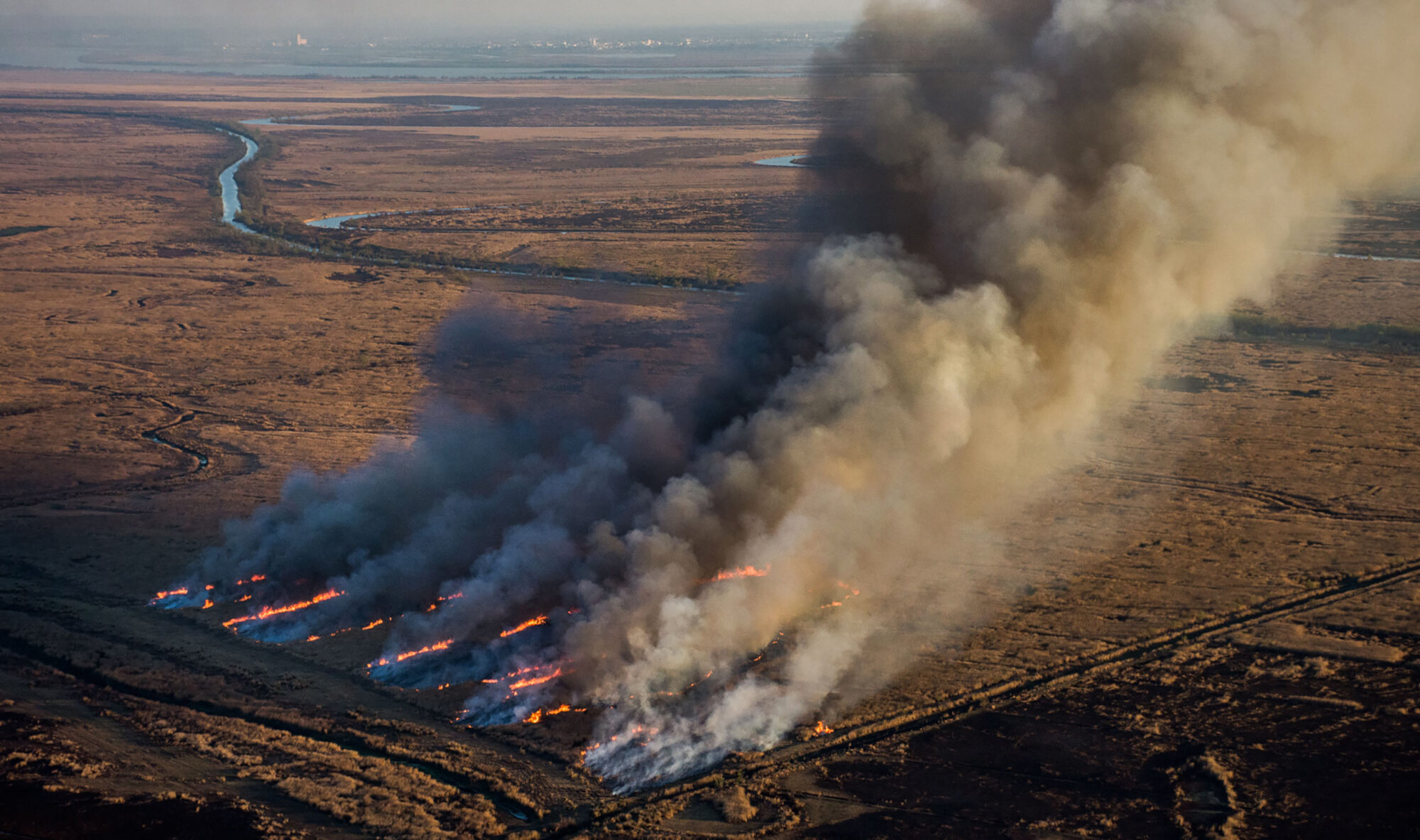
For academics and analysts, the answer to the origin of the recent fires is not so simple. “It is a sum of factors, and I would not hold only the cattle ranchers responsible, although many of them set fire to their fields,” says Rubén Quintana. “In these exceptional environmental conditions, using this method is much more serious.”
From his island in Entre Ríos, Esteban Martín has his own interpretation: “Before, the person who set fires was the islander, the inhabitant. But not now – now, anyone comes and sets fires, and they don’t care about anything, starting with those who lease the fields for livestock.”
Ernesto Massa similarly highlighted fire’s long-standing use in livestock agriculture, but cautioned of its risks: “Fire is used for vegetation renewal, it is a cultural practice of pasture management that is cheap and easy, but you have to know how to manage it well.”
Scarparo argues the fires were intentionally caused by big agribusiness to “generate social unrest” among the ranchers.
The Wetlands Law: an ongoing saga
At the same time as the fire crisis, calls for the introduction of a Wetlands Law as a tool to regulate the productive uses of land have grown stronger. However, after the fourth attempt in a decade, the proposal once more did not advance through the Argentine congress in 2022.
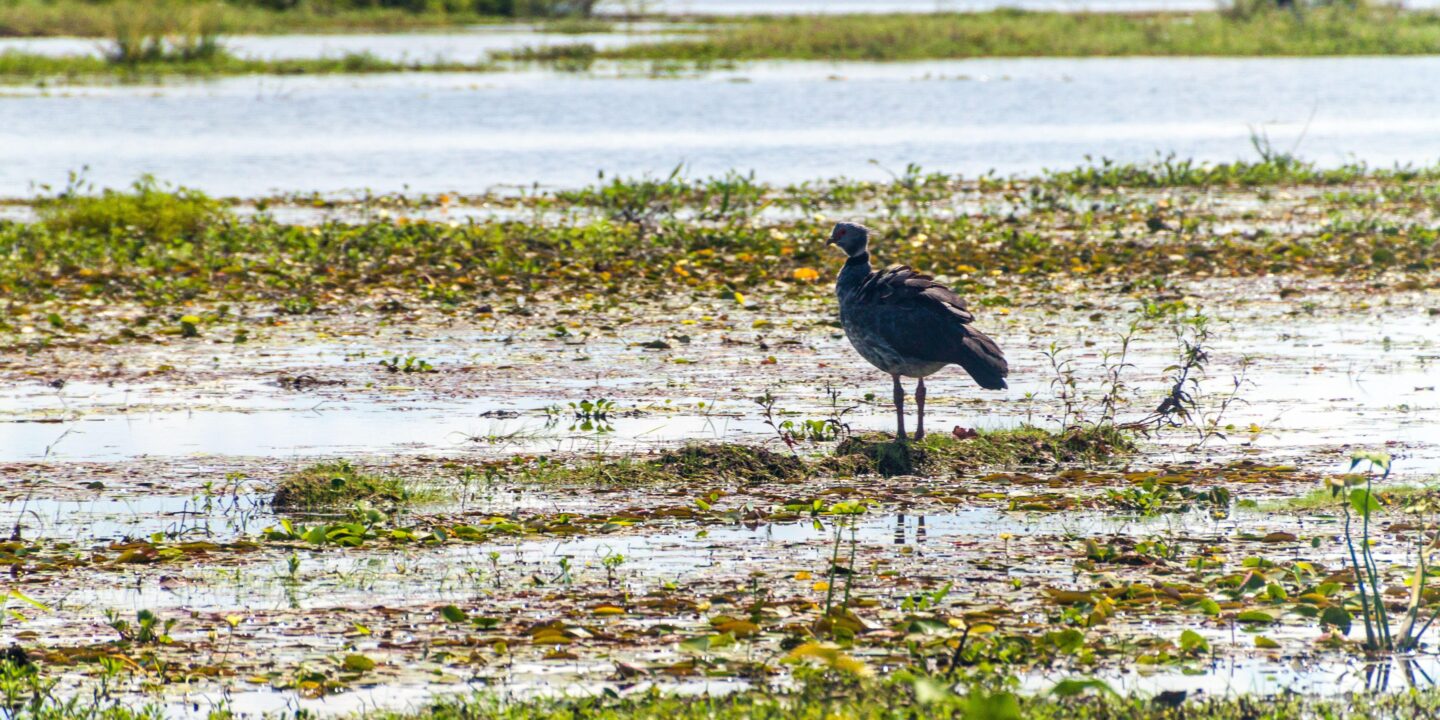
According to the environmentalists, sectors with great economic power are holding back any possibility of legislation: “Agribusiness is constantly pushing its frontier without worrying about what it deforests,” reads a public letter from the Argentinean Association of Environmental Lawyers (AADEAA). “This combination of interests against the Wetlands Law causes enormous political and media resistance. They are the fire lobby.”
Agricultural organisations, meanwhile, claim that such a law would go against production interests and generate more poverty. In November 2022, a communiqué entitled “There is no need for another law on environmental policy” was issued by a coalition of influential agricultural groups, stating that this proposal “undermines” their activity and “puts at risk the rural roots and the development of the country”.
This combination of interests against the Wetlands Law causes enormous political and media resistance. They are the fire lobby
After four failed attempts, those who have followed the debate closely see it as unlikely that the Wetlands Law will be discussed again in congress this year. “It’s an election year and I don’t think any party is going to look at this,” says Quintana. “I had hoped it would move forward last year, but it didn’t.”
Sustainable production challenges
Fundación Humedales is currently working with a group of cattle ranchers in the country’s wetlands to introduce more sustainable production. This involves following a series of practices aiming at improving the environmental performance of livestock farms, which can then be evaluated regularly against a set of indicators.
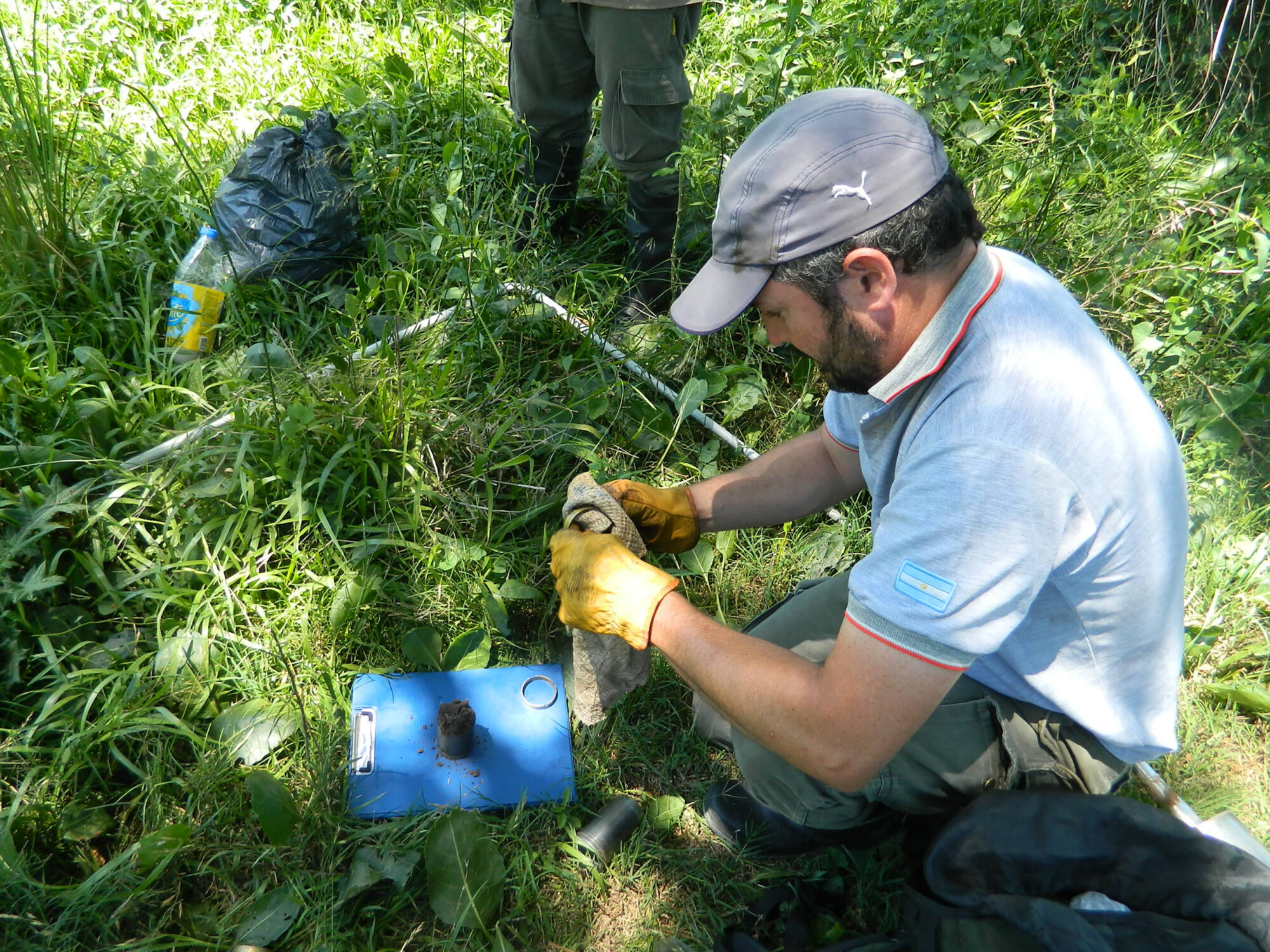
Applying better practices that include greater conservation of the ecosystem is the overall objective, says Quintana. To this end, it is important for producers to be able to receive greater reward for their efforts. “We are thinking of developing a certification that identifies sustainable wetland cattle ranching,” he explains.
The NGO is working with 12 farms in different parts of the delta on issues such as pasture maintenance, improved forage quality, soil, water and vegetation management, control of animal numbers and coexistence with wildlife.
“The extensive cattle ranching model implies a drastic transformation of the wetland,” Quintana says. “There used to be traditional wetland livestock farming, but it is probably not the most appropriate now. We have to look for intermediate models that allow production without altering the deep hydrology of the wetland.”
